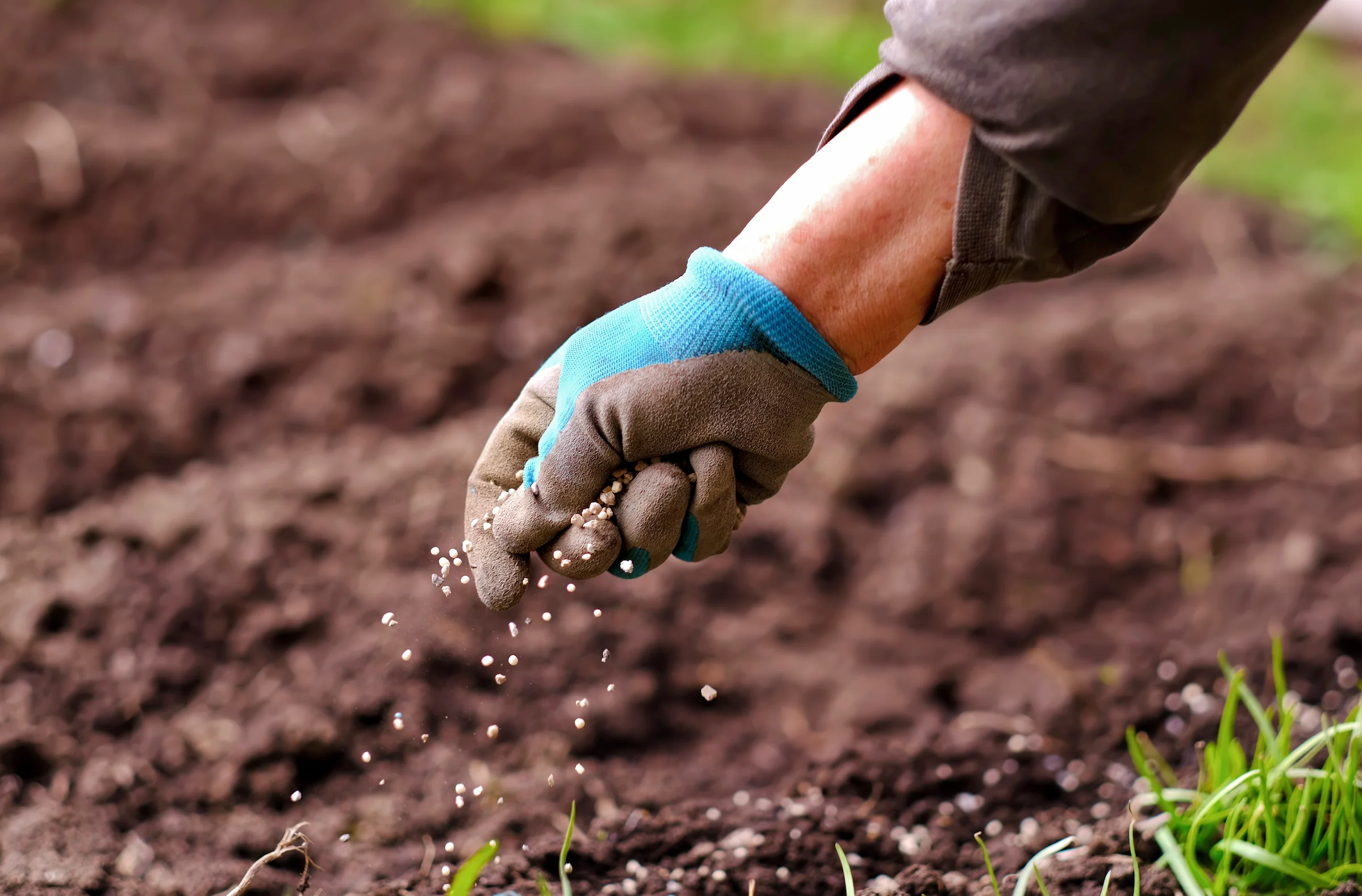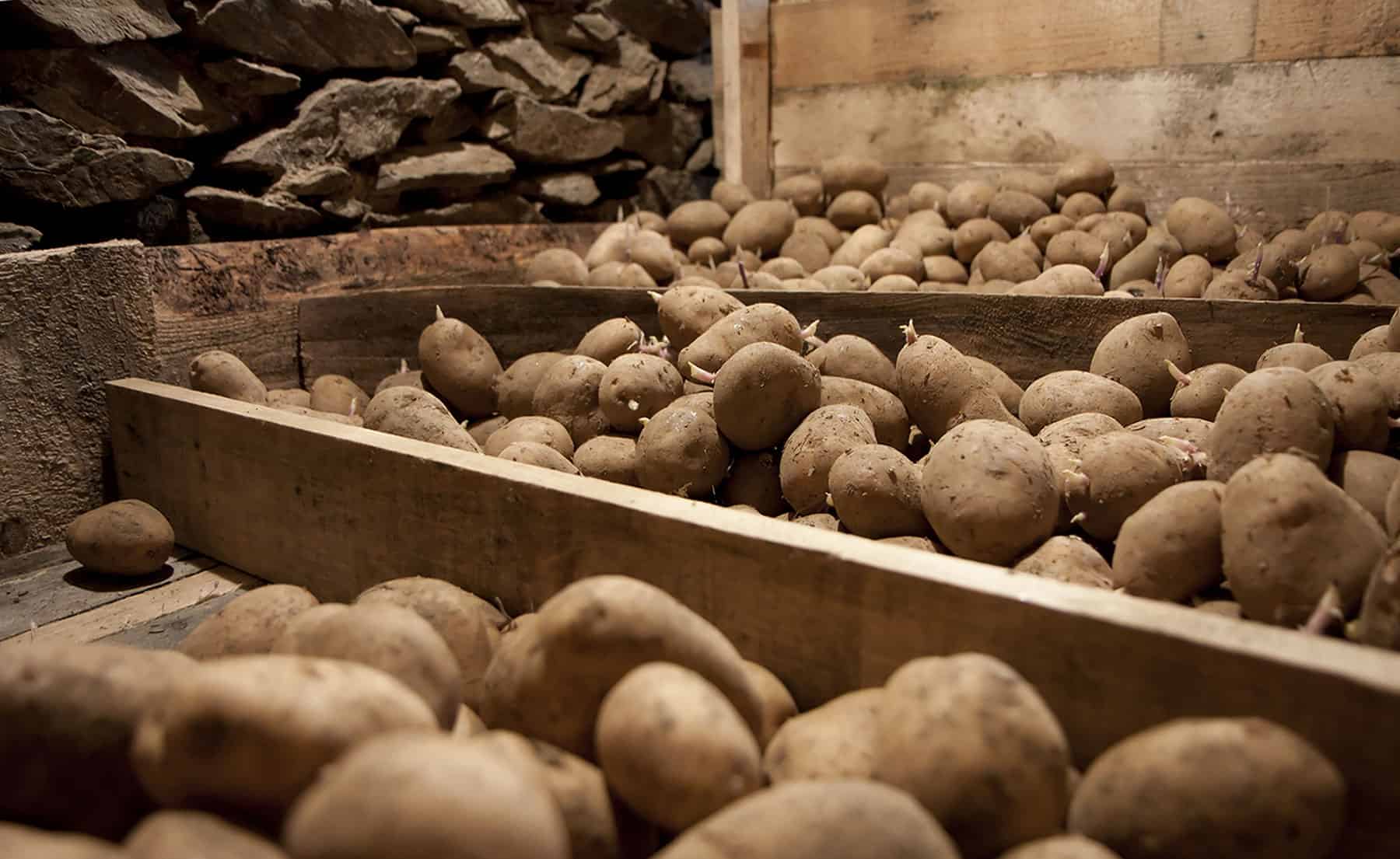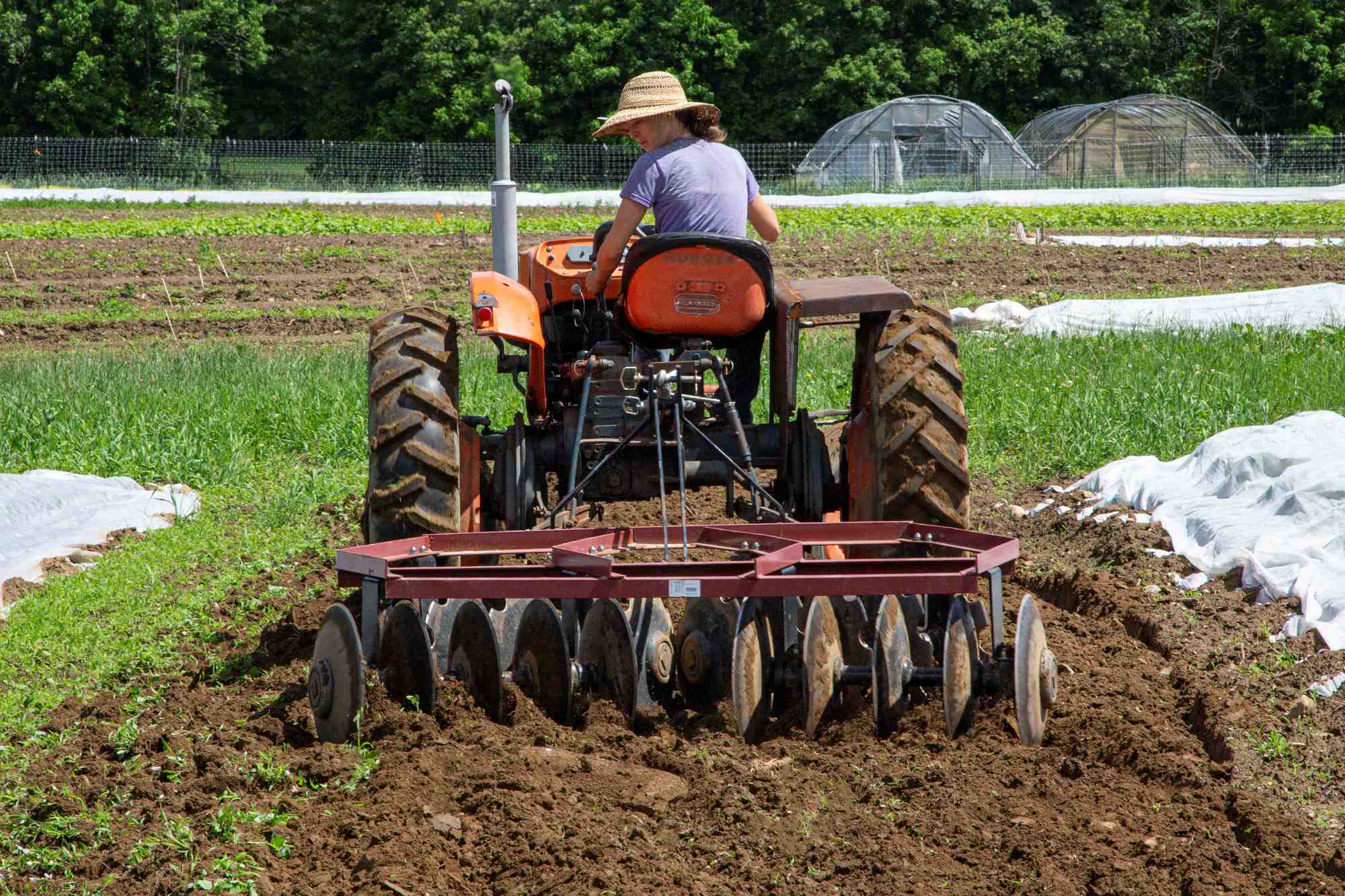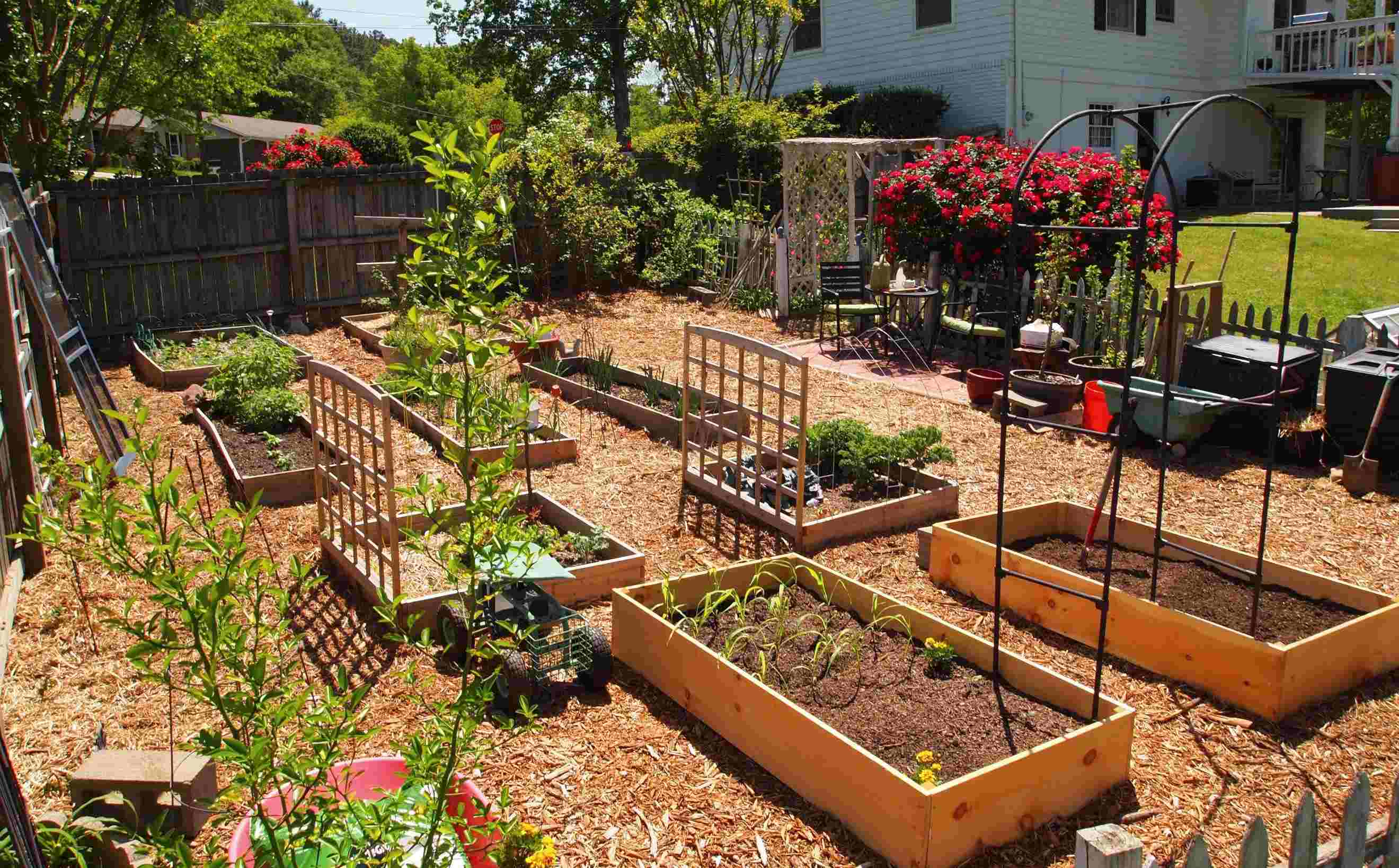Home>Gardening Basics>Understanding Soil>How To Prepare Soil For A Vegetable Garden


Understanding Soil
How To Prepare Soil For A Vegetable Garden
Modified: February 10, 2024
Learn how to prepare soil for a thriving vegetable garden with our comprehensive guide. Understand the importance of soil composition and how to optimize it for successful gardening.
(Many of the links in this article redirect to a specific reviewed product. Your purchase of these products through affiliate links helps to generate commission for Chicagolandgardening.com, at no extra cost. Learn more)
Table of Contents
**
Introduction
**
Are you ready to embark on a journey of cultivating your very own vegetable garden? Whether you're a seasoned gardener or a novice with a green thumb, the key to a thriving vegetable garden lies beneath the surface – in the soil. Understanding how to prepare and optimize your soil is a fundamental step in ensuring the health and productivity of your garden. In this comprehensive guide, we will explore the essential steps to prepare your soil for a bountiful vegetable garden. From understanding soil composition to enhancing drainage and controlling weeds, we'll delve into the intricacies of soil preparation, equipping you with the knowledge to cultivate a flourishing garden. So, roll up your sleeves, grab your gardening tools, and let's dive into the enriching world of soil preparation for your vegetable garden.
Preparing the soil for a vegetable garden is akin to laying a sturdy foundation for a building – it sets the stage for the growth and vitality of your plants. By comprehensively addressing soil composition, pH levels, organic matter, drainage, and weed control, you can create an optimal environment for your vegetables to thrive. Whether you're aiming to cultivate vibrant tomatoes, crisp lettuce, or robust bell peppers, the quality of your soil will play a pivotal role in the success of your garden. So, let's embark on this enriching journey and unearth the secrets to preparing soil that will nurture and sustain your vegetable garden.
Understanding Soil Composition
Before delving into the physical and chemical properties of soil, it’s crucial to comprehend its composition. Soil is a complex and dynamic ecosystem that consists of mineral particles, organic matter, water, and air. The mineral particles, categorized into sand, silt, and clay, form the skeletal structure of the soil. Understanding the proportions of these particles in your soil is essential, as it directly influences its texture, drainage, and nutrient-holding capacity.
Soil texture, determined by the relative ratio of sand, silt, and clay, profoundly impacts the soil’s ability to retain moisture and nutrients. Sandy soils, with larger particles, tend to drain quickly but struggle to retain moisture and nutrients. On the other hand, clay soils, comprised of tiny particles, retain moisture well but may experience drainage issues. Silt occupies the middle ground, offering a balance of drainage and moisture retention. By understanding your soil’s texture, you can tailor your soil preparation techniques to optimize its structure for vegetable cultivation.
Beyond mineral particles, organic matter plays a pivotal role in soil composition. This organic component, derived from decomposed plant and animal materials, enhances soil fertility, structure, and microbial activity. It serves as a reservoir for nutrients, promotes beneficial microbial populations, and improves the soil’s water-holding capacity. By comprehending the intricate interplay of mineral particles and organic matter, you can gain valuable insights into the unique characteristics of your soil, allowing you to tailor your soil preparation strategies to meet the specific needs of your vegetable garden.
Testing Soil pH
Understanding the pH level of your soil is a crucial aspect of soil preparation for a vegetable garden. Soil pH, which measures the acidity or alkalinity of the soil, profoundly influences nutrient availability to plants. The pH scale ranges from 0 to 14, with 7 being neutral. Values below 7 indicate acidic soil, while values above 7 signify alkaline soil. Most vegetables thrive in slightly acidic to neutral soil, with a pH range of 6.0 to 7.0, as this range optimizes the availability of essential nutrients.
Testing the pH of your soil is a simple yet indispensable step in preparing for a vegetable garden. Home testing kits or services provided by agricultural extension offices can accurately determine the pH of your soil. Once you ascertain the pH level, you can take informed measures to adjust it to the optimal range for vegetable cultivation. If your soil is excessively acidic, the addition of agricultural lime can help neutralize the acidity. Conversely, if your soil is too alkaline, amendments such as elemental sulfur can aid in lowering the pH.
By understanding and modifying the pH of your soil, you can create an environment that fosters the uptake of vital nutrients by your vegetable plants. This proactive approach to soil pH management empowers you to address potential nutrient deficiencies before they impact the health and productivity of your garden. Through regular monitoring and adjustment of soil pH, you can lay a strong foundation for a thriving vegetable garden, ensuring that your plants have access to the essential nutrients they need to flourish.
Adding Organic Matter
Integrating organic matter into your soil is a cornerstone of effective soil preparation for a vegetable garden. Organic matter, derived from compost, decomposed plant material, and animal manure, serves as a vital source of nutrients, improves soil structure, and fosters a thriving ecosystem of beneficial microorganisms. When incorporated into the soil, organic matter enhances its water retention capacity, promotes aeration, and facilitates the release of nutrients essential for plant growth.
Compost, often referred to as “black gold” in gardening circles, is a rich and crumbly blend of decomposed organic materials. Adding compost to your soil introduces a wealth of essential nutrients, including nitrogen, phosphorus, and potassium, which are crucial for the healthy development of vegetable plants. Moreover, the humus formed from compost aids in soil aggregation, preventing erosion and compaction while enhancing the soil’s ability to support robust root systems.
Furthermore, organic matter acts as a catalyst for the proliferation of beneficial soil organisms, such as earthworms and microbial communities, which play a pivotal role in nutrient cycling and soil health. These organisms contribute to the breakdown of organic matter, releasing nutrients in forms accessible to plants and enhancing the overall fertility of the soil.
By integrating organic matter into your soil, you can create a nurturing environment that supports the growth and vitality of your vegetable garden. Whether through the addition of compost, aged manure, or cover crops, the incorporation of organic matter is a sustainable and proactive approach to enhancing soil fertility and structure. Embracing the transformative power of organic matter empowers you to cultivate a vibrant and productive vegetable garden, teeming with life and abundant harvests.
Improving Drainage
Optimizing soil drainage is a critical consideration in preparing a vegetable garden, as it directly impacts the health and productivity of your plants. Proper drainage facilitates the movement of excess water away from the root zone, preventing waterlogging and the associated issues of root rot and nutrient leaching. Conversely, inadequate drainage can lead to stagnant water, suffocating the roots and impeding the uptake of essential nutrients.
To enhance drainage, especially in clay soils or areas prone to water accumulation, incorporating organic matter such as compost or well-rotted manure can work wonders. Organic matter improves soil structure, creating pore spaces that enhance water infiltration and permeability. Additionally, it fosters the development of a healthy root environment by preventing compaction and promoting aeration.
Strategic planting on raised beds or mounds can also mitigate drainage challenges, providing an elevated platform for vegetable cultivation. These raised structures encourage excess water to drain away from the root zone, minimizing the risk of waterlogged soil. Furthermore, the use of permeable materials, such as gravel or crushed stone, in pathways and around garden beds can aid in diverting excess water and preventing water accumulation.
In regions where heavy rainfall is prevalent, the implementation of French drains or swales can effectively manage excess water, directing it away from the garden area. These drainage solutions offer a proactive approach to mitigating waterlogging and safeguarding the health of your vegetable plants.
By addressing soil drainage through strategic amendments and design considerations, you can create an environment conducive to the flourishing of your vegetable garden. A well-drained soil not only fosters healthy root development and nutrient uptake but also mitigates the risk of water-related plant diseases, laying the groundwork for a thriving and resilient garden.
Controlling Weeds
Effective weed control is paramount in preparing the soil for a successful vegetable garden. Weeds compete with vegetable plants for essential resources such as nutrients, water, and sunlight, potentially stunting their growth and diminishing yields. Employing proactive strategies to manage and suppress weed growth is essential for nurturing a robust and productive garden.
Implementing mulching techniques, such as applying organic materials like straw, wood chips, or shredded leaves, serves as a natural barrier to weed emergence. Mulch not only suppresses weed growth by blocking sunlight and hindering germination but also conserves soil moisture and regulates soil temperature, creating an optimal environment for vegetable cultivation.
Regular cultivation and hand weeding can also effectively control weed populations, disrupting their growth and preventing them from establishing a foothold in the garden. By loosening the soil surface and uprooting weeds, you can curtail their proliferation and minimize competition with your vegetable plants.
Utilizing cover crops, such as clover or buckwheat, as a living mulch can outcompete weeds, reduce soil erosion, and enhance soil fertility. These dynamic plants not only suppress weed growth but also contribute organic matter to the soil upon decomposition, enriching its nutrient content and structure.
For persistent or tenacious weeds, targeted spot treatments with organic herbicidal solutions or manual removal can offer effective control while minimizing the impact on the surrounding garden ecosystem. By promptly addressing weed infestations, you can prevent them from overshadowing your vegetable plants and safeguard the productivity of your garden.
By integrating proactive weed management strategies into your soil preparation regimen, you can create an environment that nurtures the growth and vitality of your vegetable garden. Effective weed control not only reduces competition for resources but also minimizes the need for extensive and labor-intensive weed management during the growing season, allowing your vegetable plants to thrive and flourish.
Conclusion
As you embark on the enriching journey of preparing your soil for a bountiful vegetable garden, you have delved into the essential principles and practices that underpin successful soil cultivation. Understanding the intricate composition of soil, testing and adjusting its pH, integrating organic matter, optimizing drainage, and implementing effective weed control measures are fundamental steps in creating an environment that nurtures the growth and productivity of your vegetable plants.
By comprehensively addressing soil composition, you gain valuable insights into the unique characteristics of your soil, allowing you to tailor your soil preparation strategies to meet the specific needs of your vegetable garden. Testing and adjusting soil pH empowers you to create an environment that fosters the uptake of vital nutrients by your vegetable plants, laying a strong foundation for their health and vitality.
Integrating organic matter into your soil infuses it with essential nutrients, promotes beneficial microbial populations, and enhances its water retention capacity, creating a nurturing environment for your vegetable garden to thrive. Optimizing soil drainage and implementing effective weed control measures further fortify the foundation for a resilient and productive garden, mitigating potential challenges and fostering the optimal growth of your vegetable plants.
As you prepare your soil, envision the vibrant tapestry of vegetables that will flourish in this enriched environment – from plump tomatoes and crisp cucumbers to leafy greens and robust peppers. Your commitment to soil preparation sets the stage for a season of abundant harvests and the gratifying experience of cultivating your own fresh, homegrown produce.
So, as you roll up your sleeves and set out to prepare your soil, remember that each step you take is a nurturing gesture toward the flourishing of your vegetable garden. With a deep understanding of soil composition and the implementation of proactive soil preparation techniques, you are poised to cultivate a bountiful and thriving vegetable garden, reaping the rewards of your dedication and stewardship of the land.







